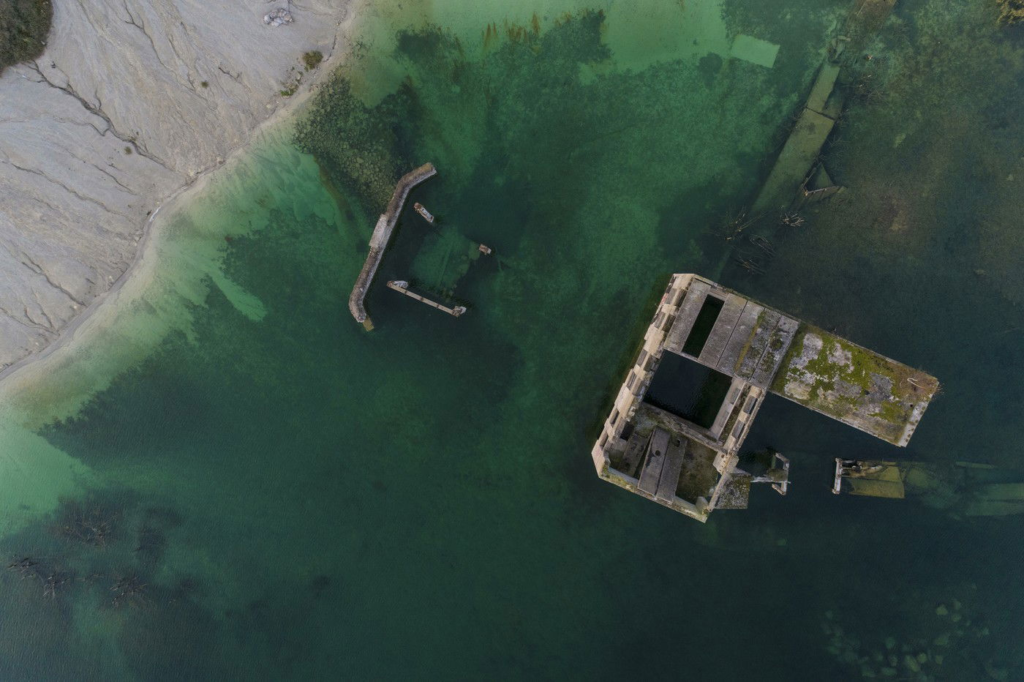In a discovery that has captivated both scientists and the public, researchers have identified over 40 mysterious circular formations at the bottom of a lake. These peculiar formations have sparked widespread intrigue, raising questions about their origin, purpose, and what they could reveal about the natural history of the region. In this article, we delve deep into this discovery, examining the facts, possible explanations, and future research that could unlock the secrets of these enigmatic structures.

The Discovery: What We Know So Far
The Mysterious Circles at the Lake’s Bottom
During a recent survey of the lakebed, researchers uncovered more than 40 perfectly circular formations, each varying in size but exhibiting consistent patterns that hint at a non-random creation. These structures, submerged in deep water, were detected using advanced sonar imaging technology, revealing a level of detail that was previously unattainable with traditional methods.
The formations appear to be spaced apart at regular intervals and are spread across a large area of the lakebed. While the lake itself is not widely known for unusual geological features, this discovery has thrown it into the spotlight, attracting researchers from around the world who are eager to investigate the phenomenon further.
What Makes These Circles So Unusual?
What sets these formations apart from other natural structures is their near-perfect circular shape and the uniformity of their arrangement. Natural processes typically create irregular formations, which makes this discovery all the more puzzling. Initial studies suggest that the circles could have formed thousands of years ago, but there is no clear consensus on their age or how they were created.
Possible Explanations: Natural or Man-Made?
Natural Geological Processes
One of the leading theories about the formation of these circles involves natural geological processes. Some experts believe that these structures could be the result of underwater volcanic activity or gas seeps, which may have caused disturbances in the lakebed. Over time, these disturbances could have led to the creation of the circular formations we see today.
Others suggest that the circles might have formed through sedimentary processes, such as underwater erosion or the accumulation of specific minerals. However, the precise circular shapes remain difficult to explain through purely natural mechanisms, leading researchers to explore alternative hypotheses.
Ancient Human Activity
Another intriguing theory posits that the formations could be evidence of ancient human activity. Archaeologists are considering the possibility that these circles were created by prehistoric civilizations, either as part of a ritualistic practice or for practical purposes, such as fishing or water management. If this theory holds, the discovery could rewrite our understanding of early human history in the region.
Some researchers have drawn parallels between these formations and ancient stone circles or other archaeological sites, suggesting that the lake may have once been a dry area where early humans lived and constructed these structures. As climate changes occurred, the area could have become submerged, preserving the circles beneath the water.
Extraterrestrial Theories
While more speculative, some have raised the possibility that the formations could be related to extraterrestrial activity. This theory, while not widely accepted within the scientific community, has gained traction among UFO enthusiasts, who point to the precision and symmetry of the circles as evidence of an otherworldly origin. While there is no concrete evidence to support this claim, the mystery surrounding the formations has left the door open for a variety of interpretations.
The Importance of Further Research
Upcoming Expeditions and Studies
In light of the discovery, several research teams are planning expeditions to study the lakebed and its formations in greater detail. These expeditions will employ a combination of sonar mapping, underwater exploration, and sediment sampling to gather more information about the structures. One of the primary goals is to determine the age of the formations, which could provide crucial clues about their origin.
Technological Innovations in Underwater Research
The use of advanced technologies, such as 3D sonar imaging and remotely operated vehicles (ROVs), will play a critical role in uncovering the secrets of these formations. These tools will allow researchers to study the formations without disturbing them, preserving their integrity for future analysis.
Additionally, environmental DNA (eDNA) sampling could offer insights into the historical biodiversity of the lake, potentially revealing whether ancient organisms played a role in the creation of the formations. As technology continues to advance, researchers will be better equipped to solve the mystery of these circles.
What This Discovery Could Mean for Science
The discovery of these mysterious formations opens up exciting possibilities for multiple fields of study, including geology, archaeology, and even astrobiology. If these formations are indeed the result of ancient human activity, they could offer new insights into prehistoric cultures and their interactions with water. Alternatively, if natural processes are responsible, the circles could help scientists better understand the geological history of the region and the dynamics of lake ecosystems.
Whatever the outcome, the discovery is a reminder of how much remains unknown about our planet’s underwater landscapes. It underscores the importance of continued exploration and research into the hidden depths of our lakes, oceans, and other bodies of water.
Conclusion: An Ongoing Mystery
The more than 40 mysterious circular formations found at the bottom of the lake have ignited scientific curiosity and public fascination. While several theories have been proposed, from natural geological processes to ancient human activity, the true origin of these formations remains a mystery. As researchers continue to investigate, the answers to this enigma may have far-reaching implications for our understanding of both Earth’s history and the forces that shape its landscapes.
About The Author
You may also like
-
The Economy is Booming Thanks to Eighty Percent Workforce Participation
-
NASA No Longer Using Boeing’s Spacecraft for Missions
-
How COVID-19 Transformed the Way Americans and Europeans Manage Money
-
Two Hospitalized in Germany on Suspicion of Marburg Virus Infection: What We Know So Far
-
Netflix Faces Boycott Over CEO’s Support for Kamala Harris: What You Need to Know
